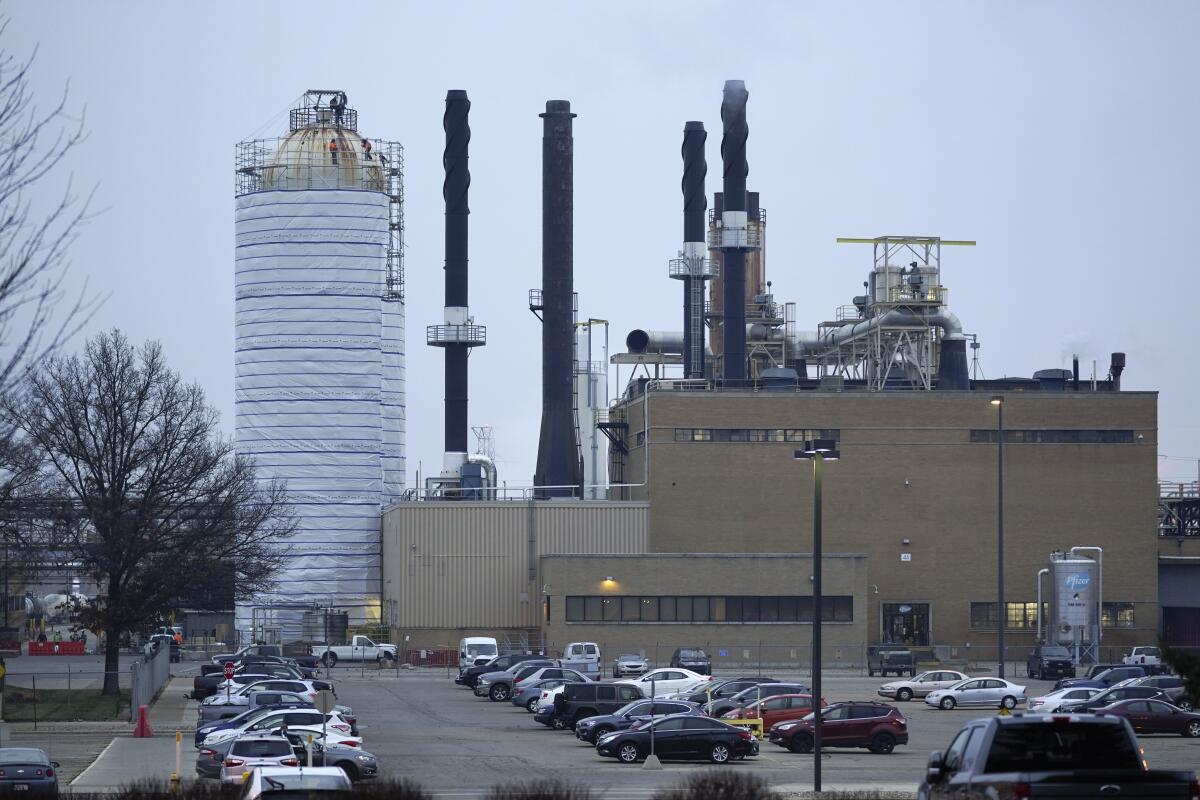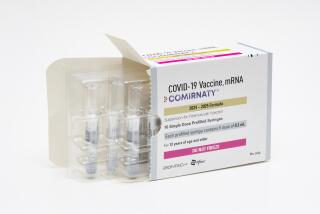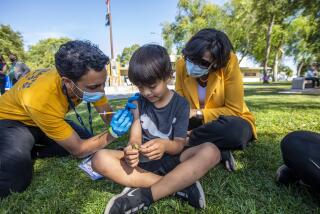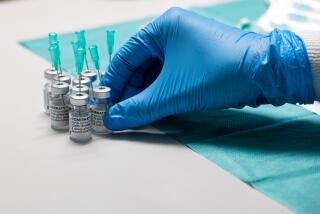U.S. officials say COVID-19 vaccine will start arriving in states Monday

WASHINGTON — The nation’s first COVID-19 vaccine will begin arriving in states Monday morning, U.S. officials said Saturday after the government gave the final go-ahead to the shots needed to tame an outbreak that has killed nearly 300,000 Americans.
Trucks will roll out Sunday morning as shipping companies UPS and FedEx begin delivering Pfizer’s vaccine to nearly 150 locations, said Army Gen. Gustave F. Perna of Operation Warp Speed, the Trump administration’s vaccine development program. Another 450 sites will get the vaccine Tuesday and Wednesday.
Initially, about 3 million shots are expected to shipped nationwide, according to officials with Operation Warp Speed. A similar amount is to be held in reserve for those recipients’ second dose.
A similar number of shots will be held back for those recipients’ second dose, which is needed for full protection from COVID-19.
The announcement kicks off a massive logistical operation involving the federal and state governments, private companies and healthcare workers to quickly distribute limited vaccine supplies throughout the U.S.
Perna compared the vaccine distribution effort to D-day, the U.S.-led military offensive that turned the tide in World War II.
“D-day was the beginning of the end and that’s where we are today,” Perna said a news conference. But he added that it would take months of work and “diligence, courage and strength to eventually achieve victory.”
MaineHealth, a network of 12 hospitals based in Portland, plans to provide an expected first delivery of nearly 2,000 vaccines to doctors, nurses and others facing risk as they treat COVID-19 patients, said Dr. Dora Mills, chief health improvement officer.
“It’s almost hard for me to talk about without tearing up,” Mills said Saturday. “This vaccine gives us some glimmer of light at the end of the tunnel.”
Locations receiving initial shipments include hospitals and other sites able to meet the ultra-cold storage requirements for the vaccine. Within three weeks, vaccines should be delivered to local pharmacies and other locations, Perna said at a news conference.
The vaccine was timed to arrive Monday morning so that health workers could receive the shots and begin giving them, Perna said.
It was unclear who would receive the first dose of the vaccine, though health workers and nursing home residents were the priority. Perna said that decision would be determined by health authorities.
In a key distribution challenge, the vaccine, co-developed with BioNTech, must be stored and shipped at ultra-low temperatures — about minus-94 degrees Fahrenheit. Pfizer has developed shipping containers that use dry ice, and GPS-enabled sensors will allow the company to track each shipment and ensure it stays cold.
Workers at Mount Sinai Hospital System in New York did a dry run this week to prepare for their shipment. In a clean room, pharmacists practiced making separate doses of a training vaccine and ensuring the freezer was kept at the proper temperature.
“Not a lot of people have vaccinated for a large pandemic like this,” said Susan Mashni, vice president of pharmacy at Mount Sinai. “So we want to make certain that we get it right. There’s a lot of different moving pieces and parts.”
At a meeting of an expert panel advising the Centers for Disease Control and Prevention on vaccines, some said local health officials are struggling to ensure the vaccine is distributed fairly and to those most in need, and to ease people’s concerns about getting the shot.
But “the funding necessary for state and local health departments to carry out this program has been put in the deep freeze,” said Dr. Jeffrey Duchin, a Seattle physician representing the National Assn. of County and City Health Officials.
The green light to begin vaccinations came late Friday after the Food and Drug Administration authorized emergency use of the vaccine. The signoff capped an unprecedented global race to speed vaccines through testing and review, chopping years off the normal development process.
The FDA found the vaccine highly protective with no major safety issues. U.S. regulators worked for months to ensure the rigor and independence of their review, but the Trump administration pressured the agency up until the final announcement. A top White House official even threatened to remove FDA chief Stephen Hahn if the OK did not come before Saturday.
Concerns that the vaccine was rushed out could undermine vaccination efforts in a country where some have deeply ingrained skepticism about vaccines. Hahn again emphasized his agency’s independence to reporters Saturday.
“Science and data guided the FDA’s decision,” Hahn said. “We worked quickly because of the urgency of this pandemic, not because of any other external pressure.”
While determined to be safe, regulators in the U.K. are investigating several severe allergic reactions. The FDA’s instructions tell providers not to give it to those with a history of severe allergic reactions to any of its ingredients.
The FDA’s vaccine director, Dr. Peter Marks, said the agency would carefully track any reports of allergic reactions in the U.S.
“I think we still need to learn more, and that’s why we’ll be taking precautions,” Marks said.
The FDA next week will review a second vaccine from Moderna and the National Institutes of Health that appears about as protective as Pfizer’s shot. On Friday, the Trump administration announced it had purchased 100 million more doses of that vaccine on top of 100 million it previously ordered.
The announcement came after revelations last week that the White House opted not to lock in an additional 100 million doses of Pfizer’s vaccine for delivery in the second quarter of 2021. The Trump administration contends the current orders plus those in the pipeline will be enough to accommodate any American who wants to be vaccinated by the end of the second quarter of 2021.
More to Read
Sign up for Essential California
The most important California stories and recommendations in your inbox every morning.
You may occasionally receive promotional content from the Los Angeles Times.










